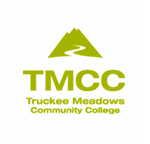Below is a summary of the abstract you submitted. Presenting author(s) is shown in bold.
If any changes need to be made, you can modify the abstract or change the authors.
You can also download a .docx version of this abstract.
If there are any problems, please email Dan at dar78@pitt.edu and he'll take care of them!
This abstract was last modified on April 27, 2018 at 6:15 p.m..

The genus Gordonia has piqued interest in recent years due to its diverse metabolic characteristics and increased frequency in clinical isolates. These bacteria tend to inhabit soil, but several members have been found in activated sludge, oil spills, and other toxic atmospheres, capable of rapidly degrading many pollutants. Gordonia spp. are frequently foam-forming bacteria that can be particularly problematic in wastewater treatment. Advancements in species identification via 16S rRNA sequence have led to proper classification of once misidentified pathogens to the taxon. For these reasons, interest has been building to establish better medical and environmental control tactics. Bacteriophages are re-emerging as alternatives to chemical control methods due to their highly selective nature and less destructive impact on fragile ecosystems. The purpose of this research was to study genetic characteristics and host specificity of two Gordonia phages isolated in fall of 2017; BrutonGaster and Schmidt were purified from soil in Northern Nevada and further categorized. BrutonGaster and Schmidt belong to the subclusters CQ2 and CU4, respectively. The genomes have been annotated and compared to closely related members of similar subclusters. BrutonGaster (91,510bp) has considerable genetic homology with OneUp, Toniann, and ClubL (90%, 81%, and 81%, respectively), while Schmidt (43,099bp) has modest genetic homology with Gsput1 and DinoDaryn (74% each). Preliminary data suggest the possibility of temperate lifecycles for BrutonGaster and Schmidt, putative integrase and immunity repressor genes have been identified for both. While Schmidt exhibits classic bullseye plaques indicative of a temperate phage, BrutonGaster results in predominately-lytic plaques when cultured with Gordonia terrae. While both phage genomes are characteristically modular, BrutonGaster had significantly higher synteny with compared species. Host range was examined using several Gordonia species with specific metabolic capabilities or medical significance. Future research will investigate the temperate nature of these two Gordonia phages.


